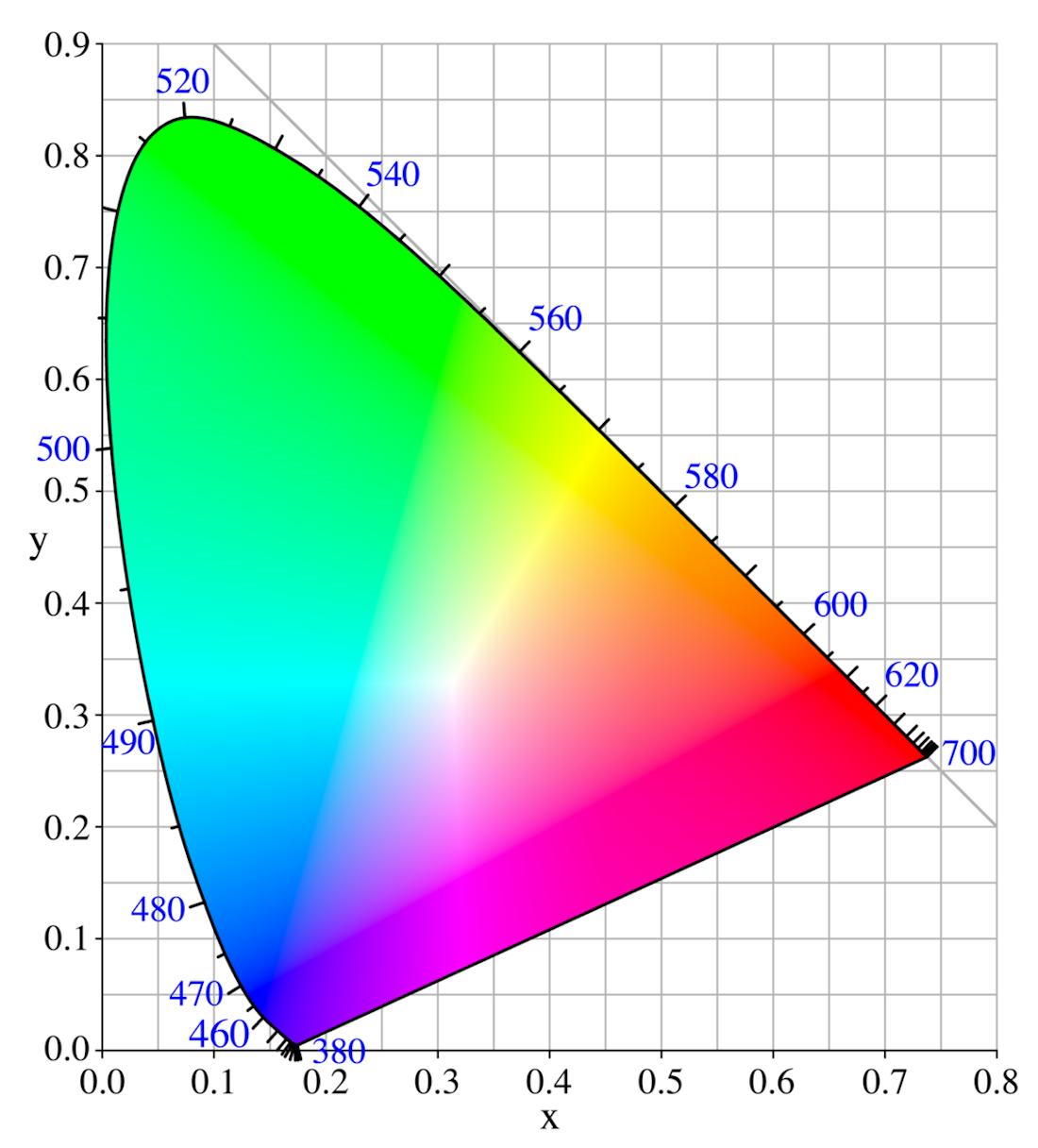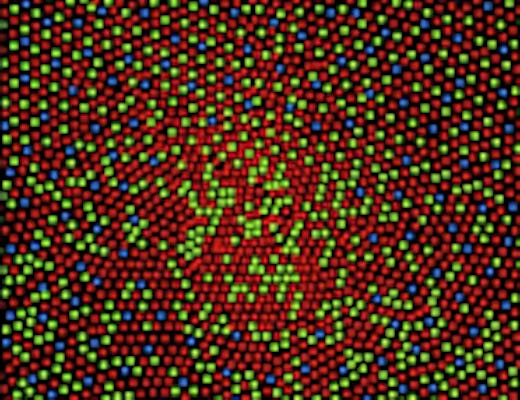Color Measurement: Explaining Color Space and Gamut
The CIE chromaticity diagram maps the average spectral sensitivity of the human eye. This specifies any visible color as a function of three parameters, or tristimulus values, which are analogous to the average sensitivity of human vision to different hues.

This method of color measurement was popularized by the CIE 1931 standard. The color space represented on the CIE 1931 chromaticity diagram shows a distribution of each spectral color around the edge of the space, with all the perceivable hues represented within. This provided a reliable platform for performing accurate color measurements, and it is still broadly used today.
In the context of digital devices, color measurement according to the CIE 1931 standard is often performed to determine the device’s color gamut. This defines the subset of colors that a device can faithfully reproduce.
What is a Color Gamut?
A color gamut is a measure of the visible wavelength range within a particular color space that a light source can produce. It is typically expressed as an area within the CIE 1931 chromaticity diagram and is subsequently used to determine how much of the visible spectrum can be expressed.

Color measurement of optical technologies such as 2D digital displays is focused on determining the percentage of a standard color gamut that the device covers. Rec. 709 was the first standardized specification for high-definition visual content, boasting roughly 35.9% coverage of the CIE 1931 color space. This was sufficient when it was first introduced in 1990, but optoelectronic technologies have since outstripped the cathode ray tube (CRT) and standard liquid crystal display (LCD) matrices that were commonplace 28 years ago.
Modern color measurements use several color gamut standards to assess the chromatic performance of a digital device. DCI P3 represents as much as 45.5% of CIE 1931, which is difficult for certain device architectures to achieve. Leading organic light emitting diode (OLED) and UHDTV products on the market are expected to cover up to 100% of DCI P3, but even this has been eclipsed by the onset of Rec. 2020 which is the most complete color space currently envisaged.
Rec. 2020 is a next-generation color gamut that determines the standardized chromatic output of displays of 4K and 8K resolutions. It can be challenging to achieve upwards of 75% Rec. 2020 coverage, with modern color measurements demonstrating the inherent difficulties of reproducing mid-range wavelengths and green spectra.
Color Measurements with Admesy
Admesy is one of the leading manufacturers of optical devices for color measurements of leading-edge display technologies. We supply an extensive range of spectrometers and colorimeters capable of analyzing the chromatic output of an entire display as well as distinct pigments on the surface. Each of the Prometheus and Neo series measuring instruments is suitable for performing chromatic analysis of display architectures.

